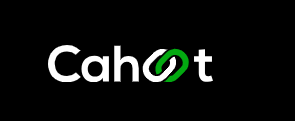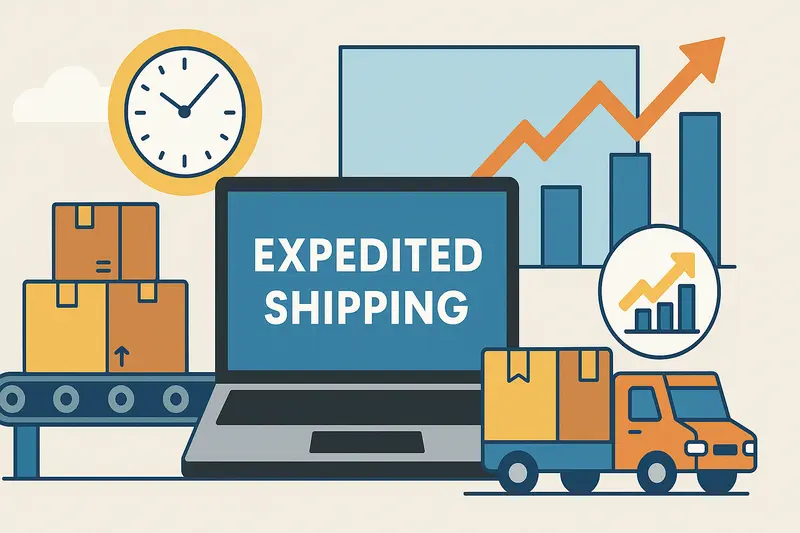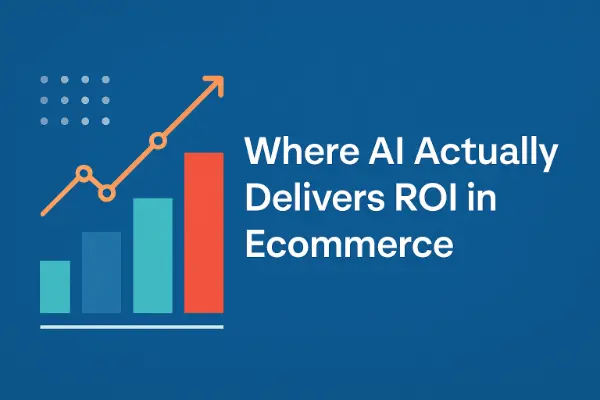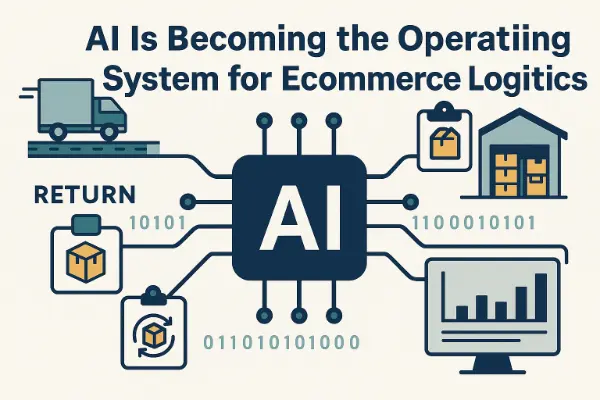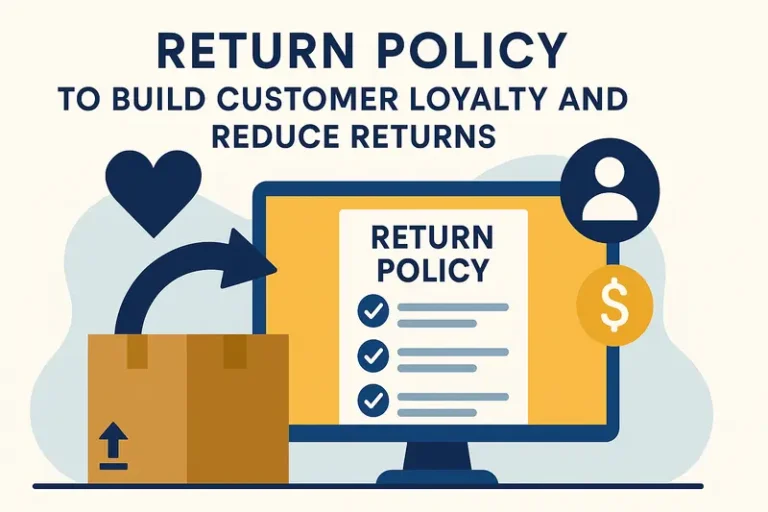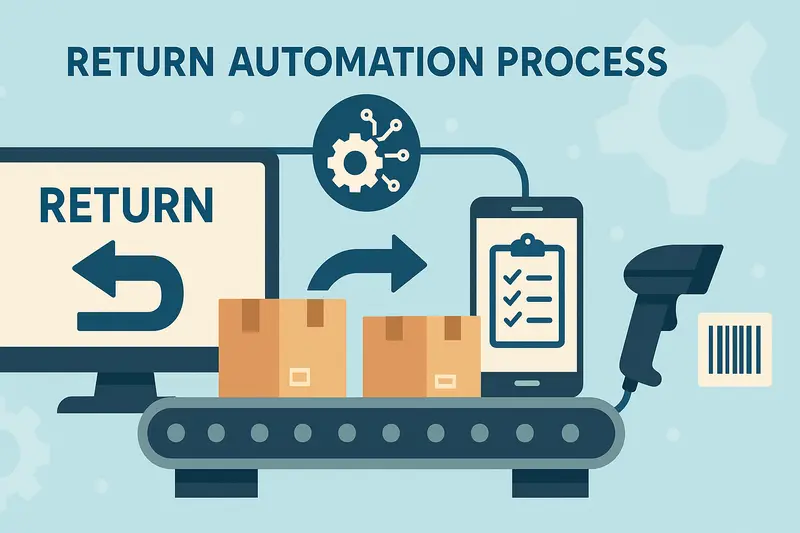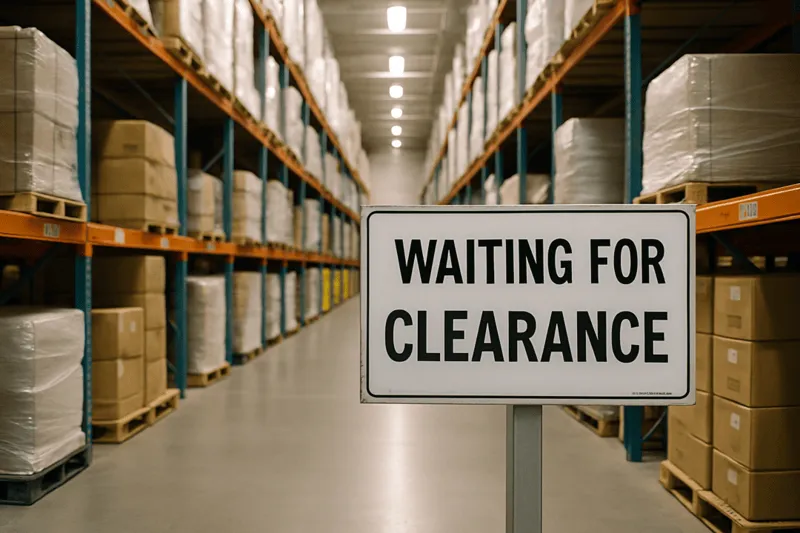Expedited Shipping in 2025: What Businesses Need to Know
In this article
 4 minutes
4 minutes
- What Types of Expedited Shipping Services Are Available?
- How Macroeconomic Trends Are Shaping Expedited Shipping
- Which Expedited Options Work Best for U.S. and International Shipping?
- How Technology is Advancing Expedited Shipping
- Managing the Costs of Expedited Shipping
- The Future of Expedited Shipping
- Final Takeaway: Winning the War, Not the Battle
Expedited shipping has evolved far beyond simply paying a premium to move packages faster. In today’s economy, speed is just one dimension—intelligence, technology, and network design are now the real drivers of success. With tariffs, geopolitical tensions, and shifting consumer expectations reshaping global commerce, businesses must rethink how they approach expedited shipping to protect margins and maintain customer satisfaction.
What Types of Expedited Shipping Services Are Available?
Traditionally, “expedited” meant air freight—paying more for faster delivery. That definition is outdated. Today, expedited shipping options include:
- Ground-based expedited delivery through regional carriers, which can often deliver two days faster than national carriers while covering 70% of the U.S. population.
- Air shipping, still used for urgent or long-distance shipments, though costly and carbon-intensive (six times more emissions than ground).
- Multi-warehouse distribution, where inventory is strategically placed closer to customers to shorten transit times.
- Cross-border expedited solutions, often using Delivered Duty Paid (DDP) services and digital customs documentation to prevent delays in clearance.
In short, expedited shipping is no longer just a service level—it’s a strategic supply chain design.
Slash Your Fulfillment Costs by Up to 30%
Cut shipping expenses by 30% and boost profit with Cahoot's AI-optimized fulfillment services and modern tech —no overheads and no humans required!
I'm Interested in Saving Time and MoneyHow Macroeconomic Trends Are Shaping Expedited Shipping
The ripple effects of tariffs, regulatory changes, and geopolitical tensions are reshaping shipping strategies.
- Tariffs are forcing brands to nearshore or onshore inventory instead of relying on just-in-time shipments from Asia. Models like shipping directly from China under the de minimis exemption have been dismantled, making them economically unfeasible.
- Geopolitical risks and congestion at ports create unpredictable delays, making distributed fulfillment and buffer stock more important than ever.
- Customs clearance has become a major bottleneck; shipments that once “sailed through” are now slowed by greater scrutiny, paperwork, and misclassification risks.
Expedited today doesn’t mean paying extra to skip the line; it means building resilient networks that anticipate bottlenecks before they happen.
Which Expedited Options Work Best for U.S. and International Shipping?
The right expedited strategy depends on destination:
- Domestic U.S. Shipping:
Success comes from a three-part formula—multi-warehouse distribution, regional + national carrier mix, and AI-driven routing. Orders must be dynamically assigned based on location, time, and carrier reliability, not just cost. - International Shipping:
Delivered Duty Paid (DDP) is critical. Without it, shipments may reach the destination country in days but sit in customs for weeks until duties are paid. Accurate digital paperwork and proper classification speed clearance. Partnerships also matter—global carriers like DHL offer smoother handoffs to local networks, while USPS depends on third-party agreements that may vary in efficiency.
Looking for a New 3PL? Start with this Free RFP Template
Cut weeks off your selection process. Avoid pitfalls. Get the only 3PL RFP checklist built for ecommerce brands, absolutely free.
Get My Free 3PL RFPHow Technology is Advancing Expedited Shipping
Technology has redefined expedited shipping in several ways:
- AI-driven routing and predictive labeling: Software can override carrier-promised dates by using real-world performance data to choose the fastest, most reliable carrier.
- Dynamic inventory placement: Algorithms analyze demand patterns, seasonality, and geography to place inventory closer to customers before orders arrive.
- Digital customs: Eliminating paper documents accelerates cross-border processing.
- Peer-to-peer fulfillment networks: Platforms like Cahoot leverage unused warehouse space across brands to create Amazon-like speed without massive capital investment.
Managing the Costs of Expedited Shipping
Expedited shipping will always be more expensive, but businesses can manage costs by:
- Strategically distributing inventory closer to customers to minimize long-zone shipping.
- Using AI to route orders based on actual carrier performance, avoiding missed delivery promises.
- Negotiating carrier contracts with both regional and national carriers for flexibility.
- Reducing air reliance, instead using smart ground optimization to cut costs and emissions.
- Consolidating cross-border shipments through hubs for better customs efficiency.
The cheapest way to go fast is often to already be there.
ShipStation vs. Cahoot: 21x Faster, Real Results
Get the inside scoop on how a leading merchant switched from ShipStation to Cahoot—and what happened next. See it to believe it!
See the 21x DifferenceThe Future of Expedited Shipping
Currently, expedited shipping represents about 10% of parcel volume but more than 20% of parcel spend. Looking ahead, several trends will shape the market:
- Regional fulfillment growth: Expedited will rely less on air and more on distributed ground networks.
- Sustainability pressure: Companies will shift away from carbon-intensive options toward smarter ground-based networks.
- Peer-to-peer fulfillment models: Shared warehouse capacity will allow smaller brands to achieve Amazon-level speed without massive infrastructure.
- AI and automation: Routing, labeling, and predictive delivery windows will increasingly be powered by AI instead of static carrier estimates.
In the near future, speed won’t be a premium—it will be the baseline.
Final Takeaway: Winning the War, Not the Battle
Many businesses still optimize for single cost levers—like choosing the cheapest port or focusing only on container costs. This often leads to higher expenses elsewhere, such as long cross-country parcel deliveries. Expedited shipping in 2025 requires a total cost of logistics mindset, where success is measured not just by speed but by efficiency, customer satisfaction, and sustainability.
Turn Returns Into New Revenue
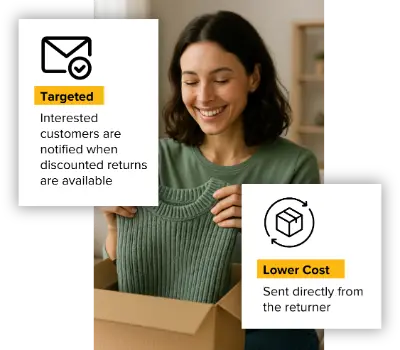
Optimizing Your Returns Automation Process with Technology
Why Manual Returns Don’t Scale: Automating the Returns Process
Handling returns manually might work fine when you’re a tiny operation with the occasional return. But as your ecommerce business grows, manual processes quickly become overwhelmed, leading to increased human error. Imagine having to personally approve every return request email, copy-paste shipping labels, update spreadsheets, send refund confirmations… It’s tedious and slow. Manual returns don’t scale for a few key reasons:
Make Returns Profitable, Yes!
Cut shipping and processing costs by 70% with our patented peer-to-peer returns solution. 4x faster than traditional returns.
See How It Works- Volume and Speed: In a growing business, return volumes can jump to dozens, hundreds, or thousands per week. Customers today expect quick turnarounds, many anticipate their refund within days of sending the item back. If you rely on human-driven steps for each return, you become a bottleneck. One retailer I know shared that before automating, it took them 5-7 days just to initiate a return after a customer contacted them, because someone had to manually email a label and RMA. By that time, the customer was already frustrated. Manual processes simply can’t keep up with the pace consumers demand.
- Error Prone: Humans make mistakes, especially when doing repetitive tasks. You might generate the wrong label, refund the wrong amount, or mis-type an order number. Each error can lead to more costs (reshipping, apologizing with gift cards, etc.) and erodes customer trust. Automation drastically cuts down these errors by doing things systematically the same way each time.
- Resource Intensive: Think of the manpower required for manual returns, staff to answer emails or calls for return requests, staff to manually process refunds in the system, and staff to key in inventory updates when an item comes back. All those labor hours cost money and could be better spent on more value-added work (like analyzing why returns happen or improving product info). As you scale, hiring people just to handle returns is not efficient. Automation, on the other hand, lets you handle more returns without linear headcount growth.
- Lack of Visibility: Often, with manual processes, tracking is ad hoc. A customer might ask, “What’s the status of my return?” and your team has to dig through emails or logs. That’s not a great experience. Automated systems usually come with dashboards or at least standardized records, so you and the customer can see status in real-time. Without that, things fall through cracks, maybe a return parcel arrived, but nobody acted on it because the email got buried.
Automation can also save time by reducing manual efforts, such as automatic label generation and systematic processing.
In essence, a manual returns process might work when you’re fulfilling orders from your garage, but if you’re aiming to be a serious ecommerce player, it will buckle under pressure. Customers will notice too: slow, clunky returns make them hesitate to buy again. On the flip side, scaling up with automation makes returns smooth and nearly self-service, which can boost customer loyalty (people remember a hassle-free return almost as much as a fast delivery).
So, the writing on the wall is clear: if you want to grow and keep customers happy, you need to take the machines out of the hands of your overworked staff and let actual machines (software, and maybe hardware robots) take on much of the load to manage returns efficiently. Let’s explore how.
Automated Authorizations and Labels
One of the low-hanging fruits of returns automation is automating the authorization and shipping label generation process. This is typically the front-end interaction with the customer when they decide to return something. Historically, a customer might have had to call or email to get an RMA (Return Merchandise Authorization) number and a return shipping label. That’s not only labor-intensive on your side, but also annoying for customers. Fortunately, it’s 2025, we have better ways!
Self-Service Returns Portals: Implement an online returns portal where customers can initiate returns 24/7 without needing a human in the loop. This self-service platform allows them to log in or enter their order details, select the items they want to return and the reason, and the system automatically checks if it’s within the allowed return window and conditions. If yes, it immediately generates an RMA number and a return shipping label (or QR code) for them. This whole process can happen in seconds while you sleep. Many ecommerce platforms or 3rd-party solutions (like Loop, Returnly, Happy Returns, etc.) offer this functionality.
Convert Returns Into New Sales and Profits
Our peer-to-peer returns system instantly resells returned items—no warehouse processing, and get paid before you refund.
I'm Interested in Peer-to-Peer ReturnsAllowing customers to initiate a return request online significantly enhances the returns process. They can quickly receive a pre-paid return label, simplifying returns and providing real-time updates, which boosts overall customer satisfaction.
What does this achieve? For one, speed and convenience. The customer doesn’t wait for your business hours or a support reply; they get instant gratification (well, as much as one can when returning a product). From your perspective, it eliminated a touchpoint that used to consume staff time and hassle, replacing a clunky manual lookup with a one-click label.
Rule-Based Authorizations: Your returns software can enforce your policy automatically. For example, if the product is past 30 days since delivery, the portal can disallow the return and politely inform the customer of the policy (or allow them to submit a request for exception, which someone can review, but at least the default is handled). If an item is marked final sale, it won’t create a label, maybe it tells them to contact support. You can encode things like “no returns on opened software” or “must return within 14 days for electronics”, and the system follows those rules. This ensures consistency, no more one rep accidentally approving something against policy or forgetting to check a condition.
Instant Label/QR Code Provisioning: Generating the shipping label for the customer is huge. Typically, the system will email them a PDF label or give a download link. Some modern approaches even provide a mobile QR code so the customer can just take that to, say, a FedEx or USPS store and have it scanned to print a label (handy for those without printers). The key benefit is that you’re likely using your discounted shipping accounts and automatically recording the tracking number. So, not only does the customer not have to pay out of pocket (if you offer prepaid returns), but you also have visibility. The moment that label is created, you know return XYZ is in motion and can track it all the way back.
Auto-Communication: Along with the authorization, automation handles emails to the customer, confirming their return request, instructions on how to pack it, where to drop it off, etc. These can be templated and personalized by the system without any human intervention. You’d be surprised how much confusion a simple, clear automated email can save (“Affix the attached label and drop the package at any USPS location. We’ll notify you once we receive it.”, done).
By automating authorizations and labels, you effectively start the return on the right foot: quick and correct. Your system should tie that return into an internal RMA record so your warehouse expects it. When the return arrives, ideally, it can be scanned and matched to that RMA in the system instantly.
This kind of automation scales infinitely better than manual processes. Whether 10 customers or 1000 customers initiate returns on a given day, the system can handle it (you might just see an uptick in label printing volume on your carrier account). It also opens the door to advanced possibilities, like offering exchanges on the portal (the customer can pick a replacement item, and the system might even generate a new order for the exchange once the return is on its way).
In summary, automated RMAs and labels streamline the first half of the returns journey. It removes friction for customers and slashes workload for your team. Plus, it ensures every return is properly authorized and tracked. No more mystery boxes showing up unannounced at the warehouse, no more customers waiting days for a return label. It’s efficient, and it’s something shoppers increasingly expect in the era of Amazon-like convenience.
Let AI Optimize Your Shipping and Boost Profits
Cahoot.ai software selects the best shipping option for every order—saving you time and money automatically. No Human Required.
See AI in ActionRPA in Warehousing and Reverse Logistics
When we talk about automation, it’s not just software clicks, it’s also about automating the physical and administrative tasks in the warehouse or returns center. Effective inventory management is crucial in returns automation as it facilitates quicker analysis of product returns, improves the integration of goods, and enhances overall efficiency in reverse logistics processes. RPA (Robotic Process Automation) typically refers to software bots that automate back-end processes, but let’s consider both the digital RPA and the physical automation (robots, conveyors, etc.) in the context of returns.
Digital RPA for Returns Admin: There are many small tasks in returns processing that can be automated by bots. For example:
- Updating inventory records when a return is checked in. Instead of a worker manually going into the system to increment stock, an RPA bot can detect the scanned RMA and automatically adjust stock levels.
- Processing refunds: A bot could interface with your order management or payment system to issue the refund or store credit once the warehouse marks the return as “inspected OK.” This ensures immediate action, customers get their refund faster. Some advanced setups even trigger a refund as soon as the carrier scans the return in transit (trusted returns), that’s more policy than RPA, but RPA can execute it.
- Generating inspection forms or QA checklists for staff when needed. If certain returns need extra steps (like checking serial numbers), an automated workflow can pop that info up on a screen for the worker as soon as they scan the item.
- Communicating with the customer: A bot can send out a “Your return has been received and processed” email without someone writing it each time.
ShipStation vs. Cahoot: 21x Faster, Real Results
Get the inside scoop on how a leading merchant switched from ShipStation to Cahoot—and what happened next. See it to believe it!
See the 21x DifferenceIn essence, RPA bots act like super-fast, error-free admin assistants in the background, moving data from one system to another, updating records, and ensuring nothing is forgotten. This reduces manual data entry; for instance, RPA can automatically reconcile the return with the original order and update financial records, something many retailers still do by hand.
Physical Automation and Robotics: Returns areas can benefit from many of the same warehouse automations used in outbound fulfillment. For example:
- Conveyors and Sortation Systems: If you have high volume, you can set up a conveyor that takes returned packages through a scanning tunnel. Based on barcode/RMA, it can automatically sort packages to different lanes: one for immediate restock items, one for items needing tech inspection, one for refurbishment, etc. This saves a worker from sorting through a pile and speeds up routing.
- Autonomous Mobile Robots (AMRs): These are like Kiva robots or others that move goods around. An AMR could carry returned goods from the receiving area to the appropriate storage or triage area. For example, once an item is scanned and decided it goes back to shelf A, a little robot could ferry it there. Humans then don’t waste time walking back and forth.
- Automated Scanning and Identification: Computer vision can assist in checking returns. For instance, an AI camera station could take pictures of each return item and flag if something doesn’t match (maybe the wrong item was returned in the box). This is not mainstream yet, but it’s coming. Some companies are training models to recognize if an item is damaged or worn, though human inspection is still primary in most cases.
- Sorting bots for packages: There are robotic arms and sorters that can pick up and place items. Covariant, for example, is working on AI robotics that can handle the variety of items in returns, helping reduce processing costs. A robot arm could pick a returned item, scan it, and put it into one of several bins based on instructions from the system.
All this physical automation ties into the software, including warehouse management systems. You might hear the term “hyperautomation” or “end-to-end automation”, meaning combining RPA (software bots) and physical robotics for a seamless process. For example, the moment a return arrives, the system (with RPA) creates a record, a conveyor moves it to an inspector, the inspector uses a tablet that auto-fills info via RPA, then a robotic arm sorts it to the right bin.
It’s worth noting that the level of automation to invest in depends on scale. A small business won’t install conveyor belts, but they might use RPA software to eliminate manual updates. Larger operations handling thousands of returns might see ROI in expensive machinery that saves labor and time.
Real-World Impact: What does this achieve? Speed and accuracy. A largely automated returns center could process returns in hours instead of days. Fewer touchpoints means fewer errors and lower labor costs per return. It also frees up human employees to focus on exceptions or more complex tasks (like truly evaluating a weird case) while routine stuff is handled by machines.
Furthermore, automation provides real-time visibility. If all these bots and systems are integrated, managers can see a dashboard of how many returns came in today, how many are processed, and any bottlenecks (maybe a machine is down or waiting on human approval for a certain batch). You get a more controlled and measurable process.
To sum up, whether it’s software bots taking over repetitive data chores or robots zipping around your warehouse moving goods, automation is about scaling your returns operations efficiently. It ensures that as your return volume grows, your cost and turnaround time don’t balloon out of control. Instead, they might even improve, handling more returns faster with fewer mistakes. This level of efficiency would be impossible with purely manual processes.
Cut Costs with the Smartest Shipping On the Market
Guranteed Savings on EVERY shipment with Cahoot's AI-powered rate shopping and humanless label generation. Even for your complex orders.
Cut Costs TodaySmart Routing Engines
Not all returns should follow the same path. A “smart routing engine” refers to using algorithms and business rules to decide where each return should go and what should happen to it, rather than a one-size-fits-all approach. This is especially important if you have multiple return destinations or different processing workflows based on item type or condition. A centralized portal can significantly enhance this process by allowing seamless management of carrier accounts, return labels, and automation rules.
Consider a scenario: You have a network of several warehouses, or you partner with a 4PL network that has locations across the country. A customer in California wants to return an item, and you have a facility in California, one in Texas, and one in New York. A naive return system might always send returns back to, say, your main hub in Texas. But a smart routing engine would evaluate and say: “This item is actually in demand on the West Coast, let’s route it to the California warehouse where it can be restocked and sold faster.” Or even, “this item is frequently resold quickly, let’s route it directly to the next order instead of back to any warehouse”, which is how the peer-to-peer returns model works.
Reverse logistics plays a crucial role in optimizing returns processes within ecommerce and online retail. By automating customer returns, businesses can enhance inventory management and customer satisfaction, facilitating a smoother returns experience.
Some capabilities of a smart routing system:
- Nearest-location routing: Direct the customer to send the return to the closest return center to reduce shipping time and cost. Many return portals can choose a return address dynamically based on customer location and the type of item. This saves money (shorter shipping distance) and time (product gets back into local inventory faster).
- Distributed returns to fulfill backorders: If warehouse A is out of stock of an item but warehouse B has surplus being returned, route returns to A. This kind of inventory balancing via returns can keep stock levels optimized.
- Different routes for different product types: For instance, maybe all electronics returns should go to a specialized refurbishment center or back to the supplier, whereas apparel goes to your own warehouse for inspection. The system can generate shipping labels accordingly. If a customer is returning a brand-name laptop, your rules might route that directly to the manufacturer’s RMA facility (some retailers have arrangements for that).
- Peer-to-Peer and Resale Routing: In innovative models, if a new order comes in for an item that someone else is about to return, a smart system could match them. Cahoot’s peer-to-peer returns program essentially does this, the return gets routed to the next buyer instead of to a warehouse. That’s an advanced form of routing that turns a return into a direct fulfillment for another sale, cutting out extra handling steps.
- Economic Routing: Sometimes it might be cheaper to not ship a return at all. A routing engine might decide to leverage a “returnless refund” for very low-value items (i.e., tell the customer to keep it or donate it instead of shipping back a $5 item, which some retailers do to save on shipping costs). That decision can be automated based on rules like “if item price < shipping cost, don’t require return.”
- Sustainability/Carbon-based routing: An eco-conscious routing might choose pathways that minimize carbon footprint, which often aligns with cost minimization. But for instance, consolidating returns to reduce trips can be a routing goal the algorithm optimizes for.
To implement this, your returns management software needs to allow conditional logic. It might integrate real-time data like inventory positions, new orders queue, etc., to make decisions. Some systems use AI for this, especially when optimizing multi-criteria (speed vs cost vs sustainability).
Example in action: A customer in New York is returning a jacket. Your smart system knows:
- That jacket is selling well and is out of stock on the East Coast.
- You have a warehouse in New Jersey that could restock it, and one in California that has plenty.
- It decides to have the return shipped to New Jersey for quick restock, instead of sending it to your usual central warehouse in Ohio (which would take longer and isn’t where the need is highest). Result: The jacket is back on sale in NY in maybe 2 days instead of being in transit to Ohio for a week and then maybe shipped back east for a new order.
Another example: A returned item might even be routed to a different channel. If your online store struggles to sell refurbished items, but your eBay outlet does well, a “smart” system could automatically mark the return for eBay resale. That could generate a task for the eBay team or even list it if integrated.
Benefits: Smart routing cuts down unnecessary shipping (saving money and time), increases the chance of reselling the returned item at full or good value, and can reduce workload by automating decisions that an employee might otherwise have to make case-by-case. It’s like an air traffic controller for returns, directing each package to the optimal destination.
For companies like those in 4PL networks, this is a game-changer. They essentially have a web of partner warehouses, and their software decides which node handles a given return or forwarding shipment, aiming for the lowest cost and fastest service. By coordinating like this, many have achieved significantly lower return costs and faster turnaround.
In summary, rather than treating every return identically, a smart routing engine adds intelligence to the reverse flow. It asks, “What’s the best thing to do with this particular return?” and acts accordingly. As a result, returns processing becomes more efficient, cost-effective, and even revenue-generating (when you can salvage sales via direct reroutes or quick restocks). It’s a prime example of automation not just doing a task, but making a decision, one that humans used to have to make, but at scale, algorithms can often do better.
AI Feedback and Learning Loops for Customer Experience
One of the most exciting aspects of introducing AI and automation into returns is the ability to create feedback loops that continuously improve your processes and even your products by providing valuable insights. Traditional processes are static; you set rules and follow them. But with AI, the system can learn from each return and get smarter over time, adapting to reduce future returns or process them more efficiently. Let’s break down a few feedback loops:
Return analytics plays a crucial role in optimizing the returns process. By analyzing return metrics, businesses can identify issues, make data-driven decisions, and enhance the overall customer experience.
1. Machine Learning from Return Data: Suppose you deploy an AI model to predict return probability. Over time, it will gather more data (every return that actually happens versus those predicted). The model can retrain itself to improve accuracy. If it learns new patterns, say a new fashion trend emerges, causing more bracketing, the model picks that up, and it adjusts its predictions. This means your interventions (like proactive customer outreach for high-risk orders) become more targeted and effective over time, as the AI hones in on true predictors of returns.
2. Adaptive Fraud Detection: If you’re using AI to detect return fraud or wardrobing patterns, it will keep learning as fraudsters change tactics. For example, maybe after you started catching people wearing and returning dresses with obvious stains, fraudsters start trying to clean them better. The AI might then start weighing other signals (like frequency of returns without tags). Essentially, the cat-and-mouse game can be handled by the model updating itself with new training data, rather than you manually updating the rules. As a result, your fraud detection stays a step ahead or at least in step with evolving behavior, safeguarding your business continuously.
3. Product Improvement Loop: AI can help turn returns feedback into actual product changes faster. For instance, an AI text analysis could scour all the free-text return reasons or customer comments and cluster them. It might reveal something like “30% of comments for this new blender mention the word ‘lid’.” That insight goes to the product team, who realize the lid is leaking. They redesign the lid in the next manufacturing batch. Fewer customers will return due to a leaky lid going forward, voila, the AI helped catch a design issue, and now the returns will drop, which is a tangible improvement. Over time, you could even imagine AI that predicts which product features might cause returns (maybe by comparing to similar products’ reviews in the market) and warn you pre-launch. We’re getting into very advanced territory, but it’s conceivable.
4. Dynamic Policy Adjustment: In a learning loop, your system might even adjust some processes automatically. For example, if AI notices that a certain type of return is almost always resellable at full value and customers who return it often buy another item later, it might suggest (or auto-implement) a more lenient policy there (like instant refunds upon drop-off, since the risk is low). Conversely, if a category has high abuse, it might tighten something (perhaps requiring manual review or flagging accounts). While most companies would have a human in the loop for policy changes, AI can at least provide data-driven recommendations regularly.
5. Robotics Optimization: If you use robotics, those systems often use AI to optimize their tasks as well. A robotic vision system, for example, gets better at recognizing products or positions over time via machine learning. So your physical automation can also improve through feedback, faster sorting as it “learns” the typical mix of items, etc.
6. Customer Experience Personalization: AI can feed back into the customer side too. Suppose from returns data, AI figures out you have essentially two cohorts of customers: “careful buyers” who rarely return, and “experimental buyers” who order lots and return lots. You could personalize the website or follow-ups differently: careful buyers get encouragement to try new things (since they’re cautious, maybe they under-buy), whereas experimental ones might get nudges like “check our fitting guide!” or “maybe order one size first, you can always exchange for free” to subtly encourage less bracketing. The system could learn what messaging or incentives reduce returns for each cohort and adapt.
Closing the Loop Example: Let’s illustrate a concrete feedback loop: Your AI flags that a particular sweater in “red” color is returned 3x more often than the same sweater in blue or green. It digs into reasons and finds a lot of “color not as expected.” It analyzes the photo vs reality and finds the red sweater’s image on site looks brighter than it actually is (maybe studio lighting issue). It recommends updating the product photo or description (“Note: color is a darker red tone”). You do that. Next season, the return rate for that red sweater drops closer to normal because customers now know what they’re getting. The AI sees the drop and confirms the fix worked, reinforcing that learning (“color discrepancy solved”). Now, it will be primed to catch similar issues with other products (it might monitor return reasons for color mentions across the catalog). This is a feedback loop improving both customer satisfaction and reducing returns, facilitated by AI analysis feeding into business action.
The beauty of AI-driven loops is that improvements can accelerate. The more data you feed and the more responsive you are in implementing fixes or adjustments, the more you prevent issues proactively. Over time, you may notice your overall return rate decreases or stabilizes at a lower level, or your processing time shortens, thanks to these micro-optimizations.
However, it’s important to have human oversight to ensure the AI’s suggestions or automatic changes align with business goals and fairness. AI is a tool, a very powerful one, but it works best when it partners with human judgment. A learning loop might find a pattern that is technically accurate, but you might choose not to act on it for customer relations reasons, for example.
No More Return Waste
Help the planet and your profits—our award-winning returns tech reduces landfill waste and recycles value. Real savings, No greenwashing!
Learn About Sustainable ReturnsSummary
All told, incorporating AI and automation into returns isn’t a set-and-forget situation. It’s more like planting a garden: the AI and automated processes are the plants that grow and produce, but you cultivate them, prune them, and use the fruits (insights) to nurture other parts of the business. Done right, you create a self-improving ecosystem where returns management not only gets more efficient, but actively contributes to making your products, policies, and customer relationships better over time.

Turn Returns Into New Revenue

Why the Tariff Pause Isn’t Free Money, And What Smart Brands Should Do Instead
So here we are: July 2025. Tariffs on China-made goods are sky-high, but the dust has temporarily settled. There’s a pause in new enforcement actions. And what’s the first thing a lot of brands are doing?
Stockpiling like it’s Costco on a snow day.
Look, I get the impulse. You want to beat future price hikes. Lock in rates now. Stay ahead of the next wave. But this mindset, that the tariff pause is some kind of bonus round or rebate window, is a dangerous trap. I’ve seen it play out, and it rarely ends well.
Why Brands Are Stockpiling (And Why That’s Risky)
Modern Retail recently highlighted how brands are tying up cash in inventory that might not sell for months. Some are maxing out warehouse capacity. Others are renting trailers just to hold product.
That’s not a strategy. That’s panic disguised as preparedness.
When you stockpile, you’re converting liquidity into risk. You’re betting on stable demand, perfect forecasting, and a logistics environment that won’t throw any curveballs. That’s a lot of assumptions.
And the math isn’t pretty:
- Holding costs are rising (storage fees, insurance, shrinkage).
- Demand is softening across DTC; June sales were down 25% YoY for small brands.
- Interest rates remain high, so capital is expensive.
Slash Your Fulfillment Costs by Up to 30%
Cut shipping expenses by 30% and boost profit with Cahoot's AI-optimized fulfillment services and modern tech —no overheads and no humans required!
I'm Interested in Saving Time and MoneyInventory Isn’t An Asset If It’s Not Moving
Let’s stop pretending every product sitting in a warehouse is “value.” If it’s not turning, it’s dead weight. And right now, many brands are sitting on SKUs that may not move until Q4, if at all.
Worse, some brands are prepaying for production to “lock in pricing,” leaving them vulnerable to shifts in demand, freight delays, or SKU obsolescence. Cash on shelf is not cash in hand.
I’ve personally seen brands take on more inventory than they could realistically sell in two quarters. And once your cash is tied up, options disappear. Marketing slows. Hiring freezes. And suddenly, you’re in survival mode, not growth mode.
What Smart Operators Are Doing Instead
The brands I see winning right now aren’t chasing bulk discounts; they’re chasing flexibility.
Here’s what they’re doing:
1. Hedging their sourcing
They’re not all-in on one supplier. They’re exploring Mexico, Vietnam, and even domestic production where feasible. Not because it’s cheaper (it’s often not), but because diversified sourcing creates leverage and optionality.
2. Rebalancing cash flow
Rather than drop $100K on inventory, they’re testing shorter runs. They’re working capital lines in smarter ways. And they’re getting surgical with demand planning, looking at return rates, sell-through velocity, and seasonality with fresh eyes.
3. Rethinking fulfillment
Tariffs are just one cost center. Fulfillment is another. Now’s the time to evaluate whether your fulfillment model is nimble. Can you scale up fast if demand spikes? Can you pull back quickly if it softens?
This is where Cahoot-style distributed fulfillment is a game-changer. You don’t have to commit to massive inventory deposits in one location. You flex regionally, based on demand, saving money on last-mile shipping and reducing your warehouse exposure.
The Trap Of Tariff-Driven Optimism
Every time there’s a pause, brands breathe a little easier. I get it. But temporary relief isn’t a long-term strategy. Tariffs could rise again. Port delays could return. Consumer sentiment could weaken further.
Smart founders are treating this moment like a chess move, not a victory lap. They’re asking:
- Where am I most exposed?
- Where am I overcommitted?
- How fast can I pivot if X happens?
If you can’t answer those questions confidently, you’re not in control, you’re just hoping the next hit doesn’t land.
Looking for a New 3PL? Start with this Free RFP Template
Cut weeks off your selection process. Avoid pitfalls. Get the only 3PL RFP checklist built for ecommerce brands, absolutely free.
Get My Free 3PL RFPFinal Thought: Play For Resilience, Not Rebates
This isn’t about being pessimistic. It’s about being ready.
There’s opportunity in this pause. But it won’t come from stockpiling; it’ll come from brands who treat the next 60 days as a strategic window. Tighten up ops. Diversify your sourcing. Build fulfillment agility.
Use the pause to prep your playbook, not to pile up product.
Frequently Asked Questions
What is the risk of stockpiling inventory during a tariff pause?
It ties up cash, increases holding costs, and exposes brands to shifts in demand or logistics disruptions.
How should brands respond to tariff uncertainty?
Diversify suppliers, test shorter production runs, and maintain fulfillment flexibility.
Is now a good time to invest in bulk production?
Only if demand forecasting is strong, otherwise, it’s safer to focus on agility.
How can a fulfillment strategy reduce tariff-related risk?
A flexible, distributed model like Cahoot helps reduce shipping costs and regional storage exposure.
Will tariffs increase again in 2025 and beyond?
It’s unclear, but most experts expect volatility; brands should plan accordingly.

Turn Returns Into New Revenue

